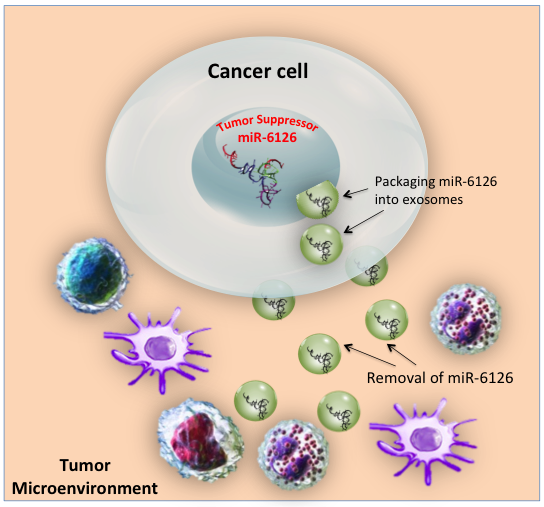As part of the Extracellular RNA Communication Consortium (ERCC) seminar series, on 30 June 2016, Dr. Janusz Rak from McGill University presented his work on “Extracellular Oncogenes as Biological Effectors and Biomarkers.”
When focusing on a single cancer cell, we consider how particular mutations alter the cell’s properties, causing it to grow, replicate, evade immune detection, and do all the other things cancer cells can do. But it’s clear that cancer is more than a collection of cells operating autonomously. Perhaps the most interesting and frightening part of cancer is that tumors are complex, heterogeneous entities that operate and interact with each other and with their environment in characteristic ways. Researchers have been studying cancer cell signaling pathways for years. An example is paracrine interactions with neighboring cells that induce irregular vascular growth. What is new and exciting about Dr. Rak’s work is the focus on oncogenes as cargo in extracellular vesicles (EVs), which is a nontraditional means of communication between cancer cells and from cancer to non-cancer cells.
Dr. Rak has followed several interesting lines of research. He addresses fundamental questions; for example:
- With which cell types do cancer-cell-derived EVs (CCEV) interact?
- Are tumor-associated mutant proteins found on or in CCEVs?
- Are these mutant proteins then expressed on recipient cells?
Preliminary work in these areas has led to the question: Can cancer cells transform non-cancer cells (i.e. make them cancer-like) via EV-mediated transfer of oncogenic proteins? And is this process complete and permanent? Numerous lines of inquiry, from in vitro to mouse studies, lead to the conclusion that the answer is probably no. Dr. Rak argues that such a finding is not surprising: if horizontal oncogenic transformation were occurring regularly between cell types, we would see more cancer patients with mixed tumor types. Secondly, phylogenetic approaches have been used to trace tumors back to single cell ancestors, another argument against the model of horizontal transformation. The current leading hypothesis is that CCEVs, rather than inducing oncogenic transformation, play a modulatory role, regulating interactions between cancer cells and between cancer and host cells but without changing their identity.
A better understanding of cancer EV biology has promise for improving cancer therapy and diagnosis. CCEVs and their oncogene cargo may represent interesting and novel pharmaceutical targets. They also constitute a unique reservoir of mutant molecules in blood, far away from an inaccessible tumor. Efforts are underway to advance cancer diagnosis through detection of CCEVs, particularly in tumor classes like glioblastoma multiforme (GBM) where no other methods of early detection are available. Research in humans has indicated that GBM patients can be identified by EVs in blood serum. As research such as Dr. Rak’s progresses, and EV biology is further elucidated, we will continue moving towards a future where we can utilize EVs in clinical practice to improve health outcomes.


